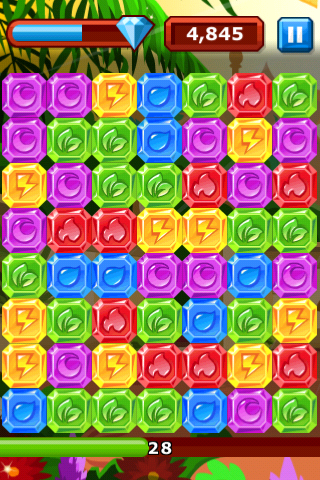Guest post from Tomas Rawlings, who chaired a panel at the (very) recent Crossover Summit at Sheffield DocFest – you can read his original article here, along with tons of other great blog posts about games, networked media, technology, evolution & nature.
On Wednesday I chaired a session about feedback, games and media at the Crossover Summit at Sheffield Documentary Festival (image) for the Wellcome Trust. This post has my notes and links from the session.
The idea for the session is rooted in biological processes that happen around us (and in us!) everyday. For example, the image (right) is of 6 linked insulin molecules.
These are part of a number of biological systems we have that together make up our homeostatic systems. This is a series of monitoring and control systems that measure various facets of the body (blood sugar, temperature etc) via feedback loops and trigger the body to respond to external and internal changes. So while the body is striving to keep a form of stasis (being alive!) the chemical composition of the body is in a state of constant flux.
There are similar ideas going on in how we create, consume and develop media. This biomedia approach sees the media form itself and something in flux, connected and responding to feedback loops. It sees media artefacts themselves (games, films, novels etc) as being part of (and evolving within) a complex ecosystem, a media ecology.
Professor Jon Dovey of the Digital Cultures Research Centre shared his view of this idea, that these feedback loops are nothing new (they are called ‘ratings’) but that it is the speed and granularity of the data that has changed. At the recent iDocs event, they looked at 18 Days in Egypt, an interactive documentary that pulls in feeds from around the world. Indeed so interlinked was this to the data that as part of the project, a software system called GroupStream was also created to collate these rich seams of data/content. Also in these projects the producer loses a degree of control over the content as they become co-creators with what was the audience. In effect the producer becomes more of a gardener.
Kate Quilton from Channel 4 shared with us her experience of exploiting the feedback loop in multi-platform work on TV. The recent Foxes Live was a mash-up form of TV show, science experiment and co-creation.
Kate talked about how the show pushed a number of boundaries of data-feeds; live GPS tracking of foxes, massive use of audience as data-gatherers for the science experiments and a wide ranging use of online mapping technologies meant that it had the biggest online footprint since the Big Brother eviction.
Wired carried a story that in 1747 the surgeon James Lind, on-board the ship HMS Salisbury, carried out the first ever conscious split A/B test to see if they could tackle the scurvy problem on-board. In this method you take a section of the overall population. Give one group (group A) a certain set condition and the other (group B) a different condition. You then see which works out best and apply that feedback to the whole population. On the HMS Salisbury the population is the crew. The surgeon selected one group of 6 men (group A) to have one sort of diet and the other (group B) to have another food selection. The group whose health improved most was the feedback loop resulting in that diet being applied to the whole crew.
I then talked about how games are using this approach and really running with it. A good example of this in action is Wooga, a German company who produce the game Diamond Dash. Daily the developers look at 128 data points showing how users interacted with the game. These points are fedback into meetings and discussions that result in Split A/B tests to look at changes in the game. From these results, weekly changes are made to the game. As such the games stasis (player retention and monetisation – or as I like to call it ‘fun’) is maintained by the continual ongoing tweaking of the game’s internal chemistry.
We talked about using things like YouTube’s data analytics of not just the number of views, but how much of the film they saw, when people stopped watching etc to build either online A/B tests for video and/or iterating a film repeatedly based on user feedback loops.
I also talked a little about the wider evolutionary model of what is going on here (the subject of my PhD work). In this I model a version of evolution that I believe is happening in software development. One where the individual is not each copy of the software, but each iteration/version. The environment in which these individuals live/die is one made up of us and our cultures.
Tomas is creative director at Auroch Digital and design director at Red Wasp Design. As games consultant he works with major organisations such as the Wellcome Trust, helping them to develop and deliver their gaming strategy. As a games designer he produced titles from original concepts to well loved IPs such as Star Wars and The Great Escape. As a design director he developed and produced the critically and commercially successful Savage Moon series (for Playstation) and Call of Cthulhu: The Wasted Land (for mobile platforms & PC). He also blogs at agreatbecoming.com



